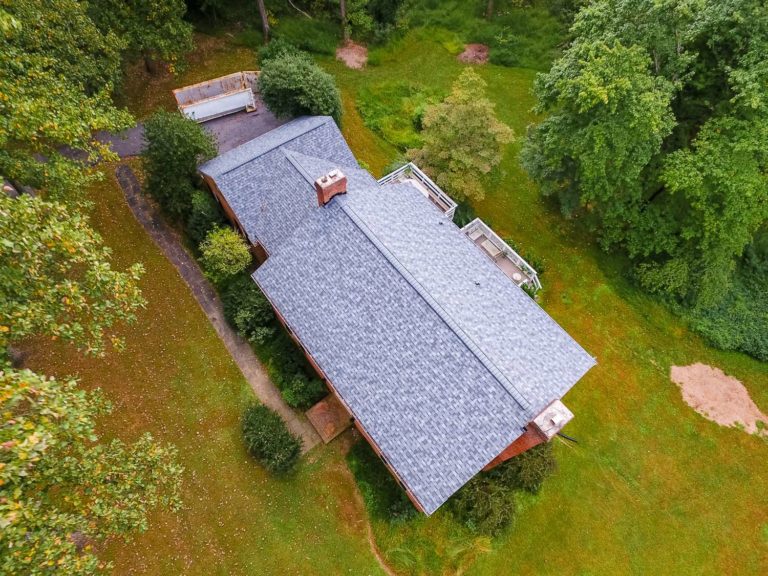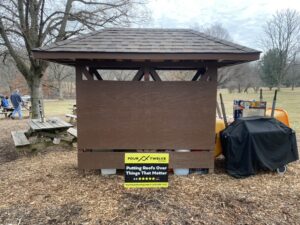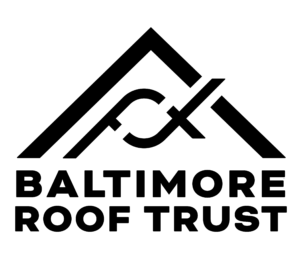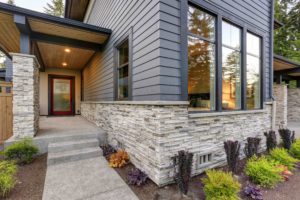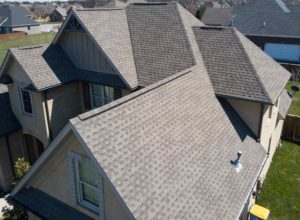Live in Baltimore? Thinking about replacing your shingle roof? You’ve come to the right place. As one of Baltimore’s premier roofing companies, we want to take some time to explain to folks in the Baltimore metro area about some considerations when doing a roof replacement on your shingle roof. We hope that this guide can help steer you in the right direction. Let us help educate you so you can get a roof that lasts as long as you live in your house and through when you sell it at the end of its life.
25 Year Shingles vs. 50 Year Shingles: Which Do We Recommend?
When purchasing a new shingle roof, one of the first questions is whether you want a 25-year roof or a 50-year roof. Our advice to conflicted perspective buyers is that a 50-year roof makes all the more sense and that in today’s market should be your only consideration.
Often times, decisions come down to price. In this instance, the incremental price of a 50-year roof vs a 25-year roof is so nominal that we advise our clients that a 25-year roof is not even worth consideration. Often times, the price difference is less than 5% more for a roof that lasts twice as long. In addition, 50-year shingles have numerous other advantages and provide a great, long-lasting value for their price (and for your home.) Some of these include:
- 130 mph wind rating (vs 60 mph wind rating for 25-year shingles)
- Code-compliance – Baltimore City and Baltimore County code require shingles with greater than 110 mph wind resistance.
- Twice the protection: 50-year shingles are laminated on both sides, and stacked two shingles high, providing homeowners much more bang for your buck.
- Improved R and D has made 50-year shingle installation easier, more durable, and longer-lasting.
All of that taken into consideration, it’s rather clear to us which option is the best combination of price and longevity.
Which Brand of Shingles is Right for Me?
In our opinion, whether you go with a GAF, CertainTeed or Owens Corning shingle, you are getting a quality shingle. At Four Twelve, we prefer to use Owens Corning products because we feel they are the best in the marketplace for a couple of reasons.
Owens Corning invented fiberglass insulation and has been around for nearly 80 years. The biggest feather in their cap is that Owens Corning was the original manufacturer of asphalt shingles, and has consistently had the best Research and Development process around creating superior home improvement materials.
With colors that are more vibrant than any other manufacturer, accessories that are more durable such as kevlar reinforced nailing strips, Owens Corning shingles have become the shingles we confidently offer our clients at Four Twelve.
Underlayment: Felt vs. Synthetic
When replacing your shingle roof, the first step of the process for contractors is to remove all of the shingles down to the wooden roof deck, at which point we begin to remove the roof system. Underneath the shingles, contractors will install what is called your underlayment.
Underlayments come in two varieties: felt paper and synthetic. Felt paper is an older technique, while synthetic is the newer innovative material. Similar to 25 years vs 50-year shingles, Four Twelve recommends that all of its customers invest in synthetic underlayment instead of felt paper. With a nominal difference in price, synthetic offers a far superior option to felt paper. Felt paper is not much different from standard construction paper you’d use for arts and crafts. It tears easily, and if rained upon, will quickly deteriorate and provide little protection in terms of waterproofing your roof.
Synthetic underlayments have become popular in recent years for a number of reasons: Firstly, if you try to tear them with nails, construction boots, or your hands, it is quite difficult. With fiberglass threading woven into the fabric, synthetic underlayments are extremely durable and resistant. Additionally, synthetic underlayments have a 6-month weather rating, meaning if left exposed to the elements for a significant time, you can ensure that your roof will remain dry.
Investing in synthetic underlayments, no matter the manufacturer is always a forward-thinking roofing option. There are two varieties of synthetic underlayment. One thin option, and one thick option. If you want a bulletproof roof with all the fixings, you can invest in the thicker option, but the thinner option is a fine product as well that will fit the needs of most homeowners. When replacing your shingle roof in Baltimore, it’s important to not overlook details like the underlayment that can be indicators of the long-term durability of your roof.
Ice and Water Shield: Mandatory for Replacing Your Shingle Roof In Baltimore
Per Baltimore City and County Code passed in more recent years, any shingle roof replacement is required to have Ice and Water Shield installed. Ice and Water Shield is an additional underlayment installed along all of the eaves and valleys of your roof system. It is meant to prevent wind-driven rain and ice dams from creating leaks in your roof system. Ice and Water Shield’s requirement by code makes it a necessary part of your roofing installation, and you should ensure that your roofing contractor is including this when planning your roof replacement project.
Ventilation: Ridge Vents, Eaves Vents, Both?
Part of purchasing a quality roof in today’s economy is investing in ventilation for your roof system. Creating air flow into your attic and air outflow out of your attic allows for a dry attic with a lesser chance for mold or condensation to damage your roof deck, as well as less damage to shingles from heat exposure through the underside of your attic. It also provides energy benefits, as you won’t lose any heating or cooling through a stagnant attic space.
The process for creating proper roof ventilation begins with air inflow. Inflow is achieved in a number of different ways but typically occurs at the eaves near your soffits and gutters. Soffit vents and vinyl soffits with breathing strips are common ways to create in-flow, but also, if you do not have these, you can create in-flow by adding a smart vent during your roof replacement.
Smart vents are breathing strips installed underneath the last row of shingles just above your gutter and allow for air to enter into your attic space while preventing debris, insects, and critters from entering as well.
Ridge vents are the most common way to create air outflow through your attic and have become highly popular during roof installations. During the roof installation process, contractors will take a saw to the ridge plywood, removing roughly two inches of plywood from either side of the peak of your roof along the ridge, and then when roofing back over this vent, contractors will install rigid plastic breathing strips to allow for air to escape. Then, these are covered with specialty shingles to cap their ridge vents. These vents are an essential step in maintaining the longevity of your roof replacement.
Four Twelve Is Here To Help
Replacing your shingle roof in Baltimore is a process that eventually, most homeowners will have to experience to some extent or another. With this guide, Four Twelve hopes we were able to help you have a better grasp on what exactly goes into the process, from materials to methods to the complexity of replacing your shingle roof in Baltimore. As contractors trusted throughout the Baltimore metro area, Four Twelve is here to ensure your roof replacement goes smoothly and effectively.
Contact Four Twelve today to have our detail-oriented team come out for a consultation and diagnosis of your shingle roof.

